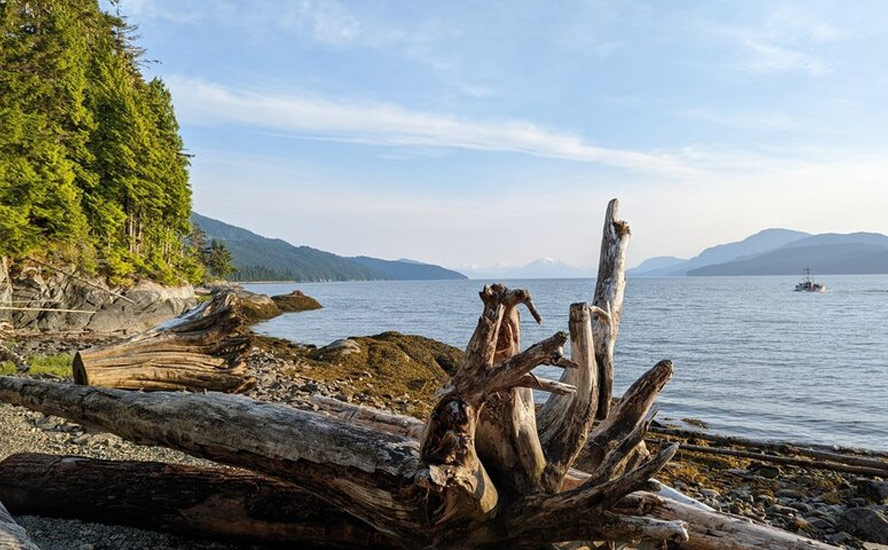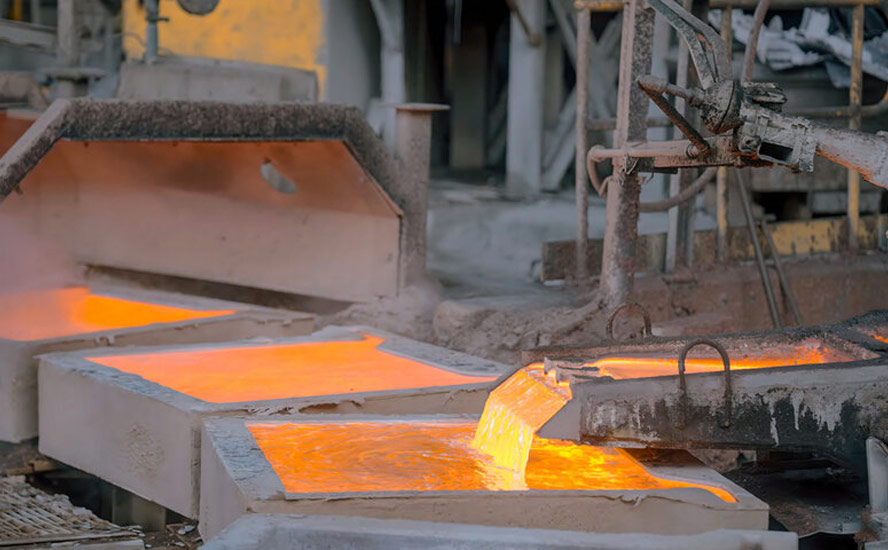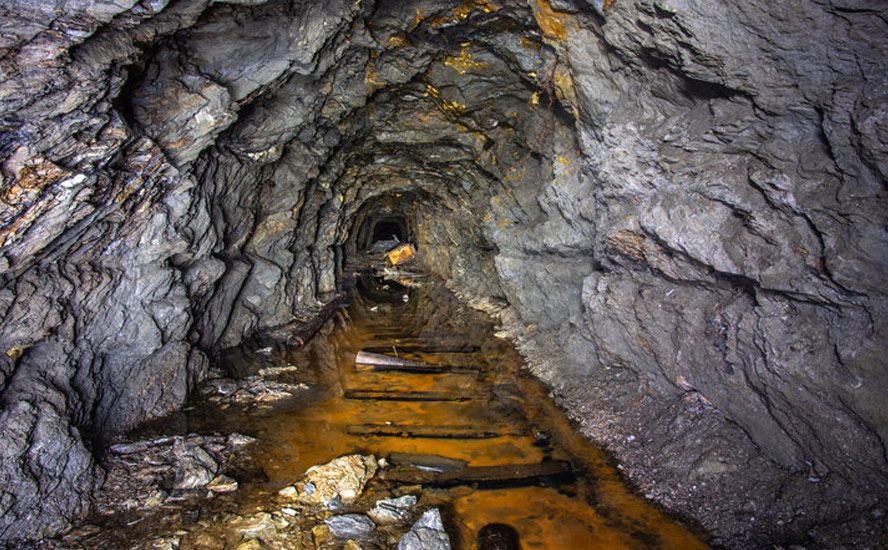Rockridge finds more high-grade copper at Knife Lake

2019.06.11
The results from the last six holes of a 12-hole diamond drilling program have come back to Rockridge Resources (TSX-V:ROCK), and they show excellent copper grades from its Knife Lake VMS deposit in Saskatchewan.
The 1,053-meter drill program, completed in spring 2019, had two objectives: to confirm the tenor of mineralization (the percentage of metals found in the sulfides) reported by previous operators, and to expand known zones of mineralization.
The company is aiming to confirm, and expand on, historical drilling with the goal of completing an NI 43-101-compliant resource on the property.
Rockridge believes Knife Lake could be the remobilized (moved by granitic rocks) portion of a larger VMS (volcanogenic massive sulfide) deposit, based on the mineralogy, mineral textures and metal ratios found within the deposit.
It is testing this thesis by drilling deeper below the deposit and around it.
The 85,196-hectare property is about 50 kilometers northwest of Sandy Bay, Saskatchewan and within the Flin Flon-Snow Lake mining district, a prolific greenstone belt. Since its initial discovery in 1915, the Flin Flon mining camp has produced over 170 million tons of sulfide ore from 31 VMS deposits, worth over $25 billion.
Historically explored with over 400 diamond drill holes, Knife Lake is a VMS deposit with a 15m-thick mineralized zone containing copper, gold, silver, zinc and cobalt. This past winter’s drill program was the first exploration done since 2001.
Out of 12 holes drilled, 11 have hit mineralization. The first five, KF190001 to KF190005, show grades ranging from 0.93% copper-equivalent (CuEq) to 2.42% CuEq. These days, anything above 1% is considered high-grade copper.

Hole KF19003 returned the best intercept of the program. It cut 37.6m starting from 11.6m downhole, returning 2.03% copper, 0.19 grams per tonne (g/t) gold, 9.88 g/t silver, 0.36% zinc and 0.01% cobalt, for a combined 2.42% copper-equivalent.
A previously-drilled hole, KF190001, had a wider intercept, 43.8m, but was lower grade, at 0.93% CuEq.
All five holes reported traces of the rare metals indium and gallium. Indium is used to make transistors and other electrical components. Silver-blue-colored gallium is found in some medical thermometers as a substitute for mercury, in semiconductors and to make mirrors.
Today’s news release detailing the final seven holes, highlighted KF190006, which tested the up-dip extension of the deposit in an area that has not been drilled, previously. The drill crew pulled up 15.5m of VMS mineralization, including 2.01% copper (Cu), 0.39% gold (Au), 8.16% silver (Ag), 0.17% zinc (Zn) and 0.02% cobalt (Co), for a 2.45% CuEq.
Hole KF19007, drilled in the same area as KF190006, tested the down-dip extension. It returned 2.95m of 0.66% Cu, 0.1 g/t Au, and 2.6 g/t Ag for a 0.82% CuEq.
The remaining four holes – KF1009-12 – were punched in at the southern end of the deposit, in fresh ground.
They came back with high copper grades as well, with the highlights being a 14.2m intersection in hole KF19011 and a 10.6m intersection in hole KF19012. In KF19011, the grades were 0.60% Cu, 0.07 g/t Au, 2.02 g/t Ag, 0.20% Zn, and 0.01% Co for a 0.77% CuEq. KF19012 cut 10.6m of 0.61% Cu, 0.09 g/t Au, 2.6 g/t Ag, and 0.17% Zn for a 0.76% CuEq.
“The Knife Lake property package is highly prospective for new discoveries using modern exploration techniques and methods given the lack of recent field work,” said Rockridge’s CEO, Grant Ewing, in the news release. “The known deposit is thought to be a remobilized portion of a presumably larger primary VMS deposit and there is excellent potential for deposit expansion at depth which we plan to test in future programs. Furthermore, there are several high quality targets to test on the expansive landholding, and there have yet to be satellite deposits discovered in the vicinity as VMS systems often host clusters or stacked deposits.”
A historical (non NI 43-101-compliant) resource estimate completed in 1998 showed 20.3 million tonnes grading 0.6% copper, 0.1 grams per tonne gold, 3.0 g/t silver, 0.06% cobalt and 0.11% zinc. This includes a higher-grade zone of 11.0 million tonnes grading 0.75% copper.
The first work was carried out between 1969 and 1973, including airborne geophysical surveys and soil sampling. The 1969 discovery hole returned 2.37% copper over 4.48m, including 3.5% over 2.5m.
Knife Lake is currently owned by Eagle Plains Resources (TSX-V:EPL). Under an option agreement, Rockridge can acquire the project by incurring exploration expenditures of C$2.5 million over three years, along with issuing 3,250,000 million shares.
The company plans to incorporate the extremely positive results from it winter drill program into an NI 43-101-compliant resource estimate for Knife Lake. After that, a summer exploration program is expected to be announced.
Both events should provide good news fodder and stock catalysts for ROCK over the next several weeks.
Richard (Rick) Mills
Ahead of the Herd Twitter
Ahead of the Herd FaceBook
Legal Notice / Disclaimer
This document is not and should not be construed as an offer to sell or the solicitation of an offer to purchase or subscribe for any investment. Richard Mills has based this document on information obtained from sources he believes to be reliable but which has not been independently verified. Richard Mills makes no guarantee, representation or warranty and accepts no responsibility or liability as
to its accuracy or completeness. Expressions of opinion are those of Richard Mills only and are subject to change without notice. Richard Mills assumes no warranty, liability or guarantee for the current relevance, correctness or completeness of any information provided within this Report and will not be held liable for the consequence of reliance upon any opinion or statement contained herein or any omission. Furthermore, I, Richard Mills, assume no liability for any direct or indirect loss or damage or, in particular, for lost profit, which you may incur as a result of the use and existence of the information provided within this Report.
Richard does not own shares of Rockridge Resources (TSX.V:ROCK).
Legal Notice / Disclaimer
Ahead of the Herd newsletter, aheadoftheherd.com, hereafter known as AOTH.Please read the entire Disclaimer carefully before you use this website or read the newsletter. If you do not agree to all the AOTH/Richard Mills Disclaimer, do not access/read this website/newsletter/article, or any of its pages. By reading/using this AOTH/Richard Mills website/newsletter/article, and whether you actually read this Disclaimer, you are deemed to have accepted it.


























